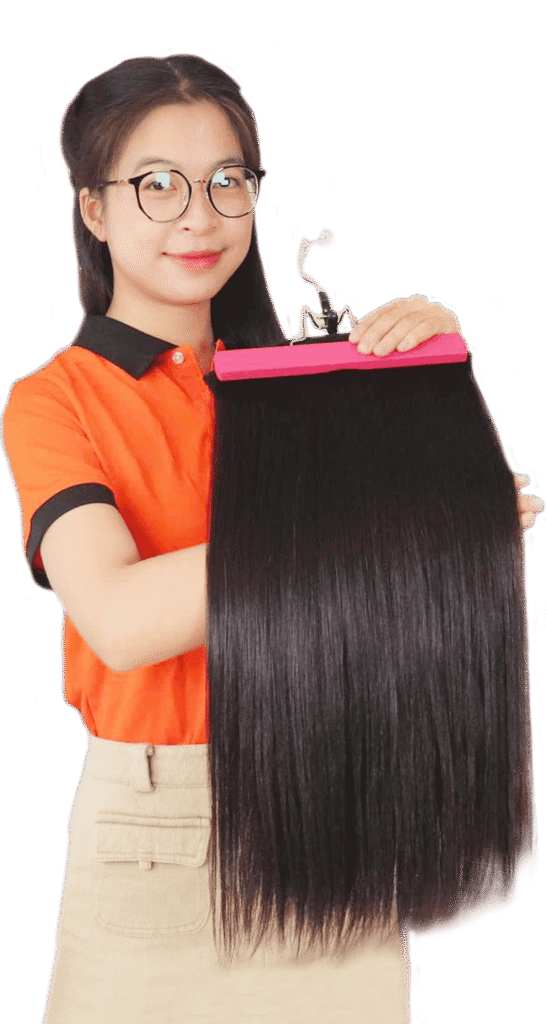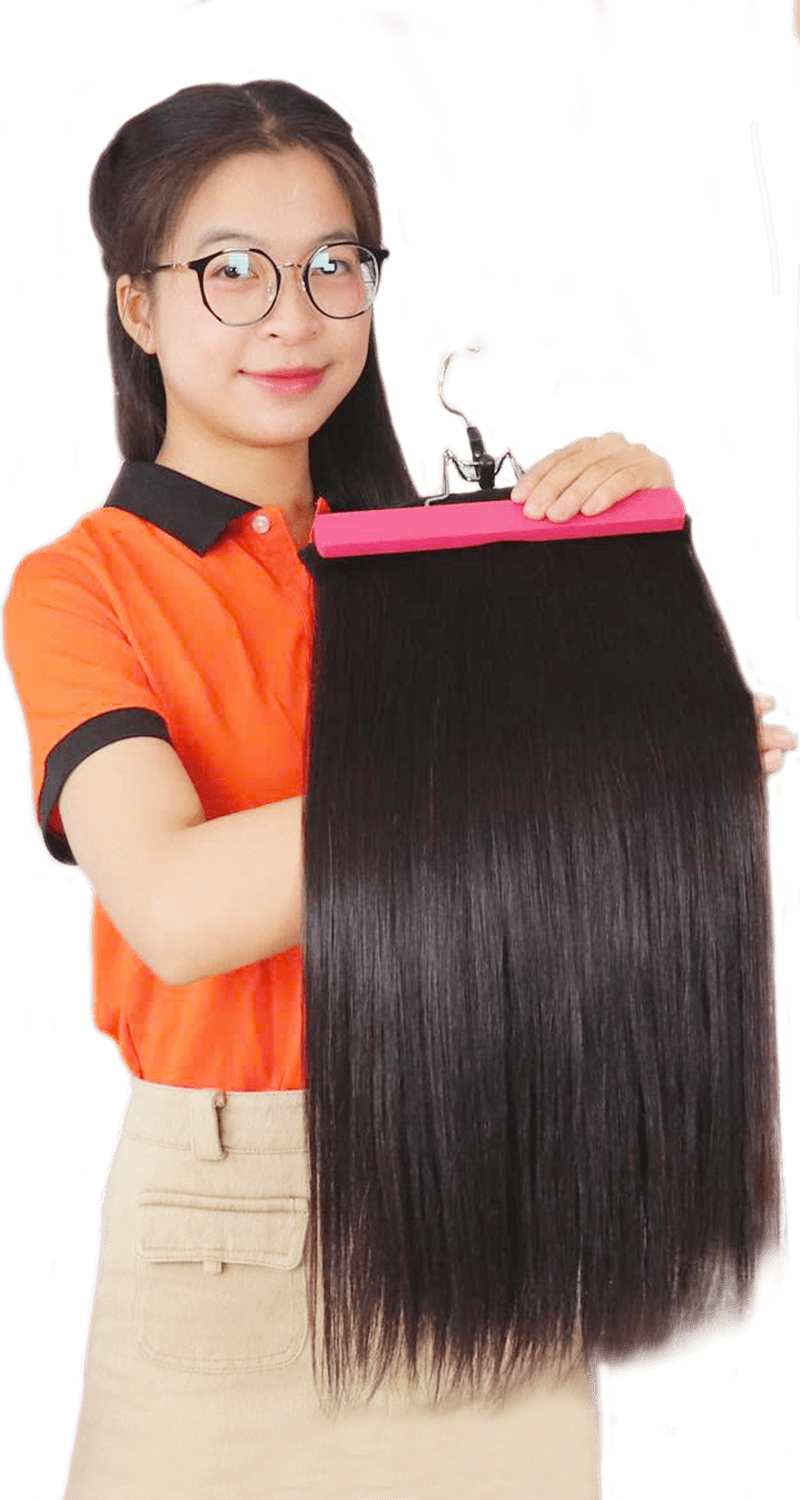In the world of hair care, there’s a microscopic realm that plays a pivotal role in the overall health and appearance of your locks – the hair cuticle. While it may sound like a complex term, understanding the basics of hair cuticles is essential for anyone striving to achieve and maintain a lustrous mane. In this comprehensive guide, we’ll embark on a journey through the intricate layers of hair cuticles, unraveling the mysteries that lie beneath the surface of each strand. From demystifying the structure of cuticles to exploring the impact of various factors on their health, we’ll equip you with the knowledge you need to keep your hair cuticles in optimal condition.
I. What is A Hair Cuticle?
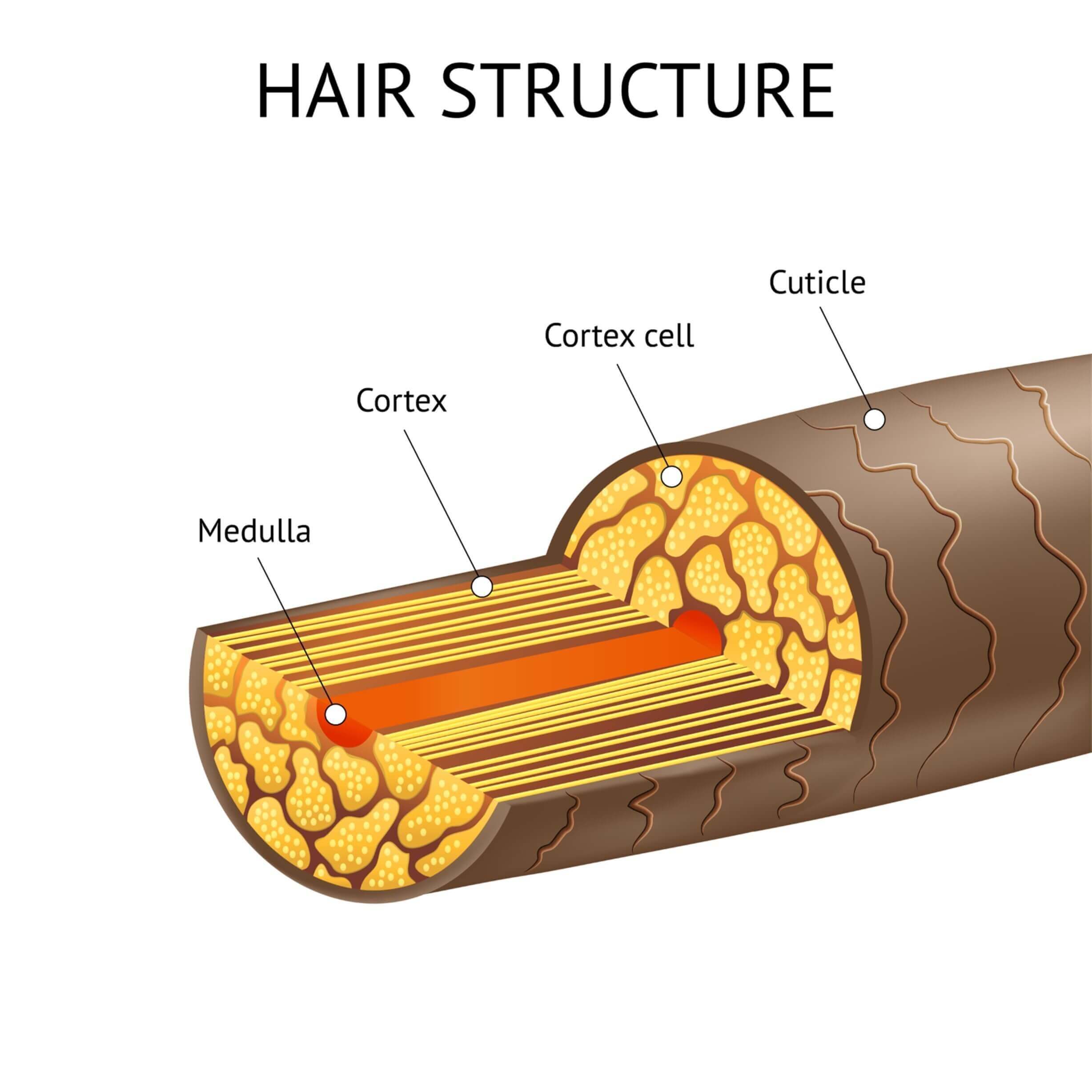
The hair cuticle is the outermost layer of each hair strand. The cuticle is composed of overlapping, transparent cells that resemble fish scales. These cells form a protective barrier around the hair shaft that shields your hair from potential damage, helping to preserve the inner structure of the hair and providing strength. When the human hair cuticles are in top-notch condition, the tresses will be smooth, lustrous, and effortlessly manageable. On the flip side, damaged hair cuticles can lead to frustrating frizz, dryness, and increased hair breakage.
II. Different Types of Hair Cuticles
When it comes to hair, we’re all beautifully different. Just like our personalities, our hair cuticles can vary significantly, playing a vital role in determining the overall health and appearance of our locks. Let’s explore the different types of hair cuticles and what they mean for our tresses:
1. Single Cuticle Layer

If you’re one of those lucky individuals blessed with naturally healthy and glossy hair, chances are you have the single cuticle layer type. Imagine your hair cuticles lying flat and undamaged, reflecting light like a mirror, giving your locks that enviable shine. People with this hair cuticle type often find their hair to be more manageable and less prone to damage.
2. Double Cuticle Layer
For some fortunate souls, their hair boasts a double cuticle layer. Imagine it as a shield that prevents further harm to the hair. If you fall into this category, count yourself among those with naturally sturdy and durable tresses. However, keep in mind that even with this added strength, proper hair care is still essential to maintain its health and beauty.
3. Raised Cuticles
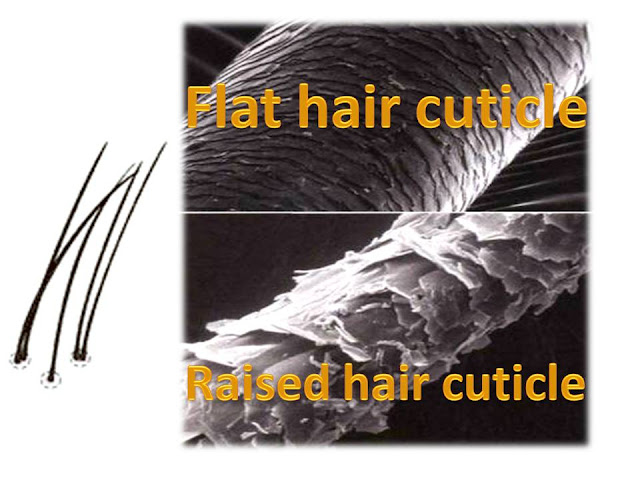
Have you ever experienced that frustrating battle with frizz? Raised cuticles might be the culprit behind your hair woes. When cuticles are raised, your hair appears rough, dry and lacks that coveted shine. This condition often arises from subjecting your hair to excessive heat styling or harsh chemical treatments. But fear not, with a little tender loving care and the right hair care products, you can tame those raised cuticles and restore your hair’s luster.
4. Missing Cuticles

In some unfortunate cases, hair strands may be missing cuticles altogether, leaving the hair vulnerable to damage. If you find your hair prone to breakage and brittleness, this could be the reason behind it. Missing cuticles make it easier for external factors like pollution, UV rays, and styling tools to wreak havoc on your locks. It’s important to take additional care of your hair in these circumstances.
III. What Are Primary Functions Of The Hair Cuticle?
The hair cuticle stands as a silent guardian, a microscopic defender shielding our locks from the elements. While many of us may lavish attention on the visible aspects of our hair – the length, color, and style – it’s the hair cuticle that plays a pivotal role in maintaining its health and vitality.
1. Protection:
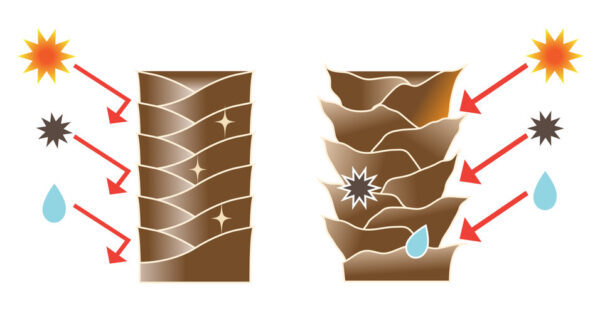
The cuticle acts as a shield – a protective barrier for the inner layers of the hair, including the cortex and medulla. It helps shield the hair from external damage, such as environmental factors (sun, wind, pollutants) and mechanical damage (brushing, styling).
2. Moisture Retention:
The cuticle plays a crucial role in regulating the amount of moisture that enters and exits the hair shaft. It helps prevent excessive water absorption, which can cause the hair to swell and become more prone to damage. The overlapping structure of the cuticle helps to lock in moisture, keeping the hair hydrated. This is crucial for maintaining the elasticity and overall health of the hair.
3. Prevention of Tangling:

The cuticle structure helps to prevent tangling and matting of the hair. When the cuticle is intact and well-aligned, the hair strands can glide past each other more easily. The smooth surface of the cuticle reduces friction between individual hair strands, minimizing tangles and knots.
4. Smoothness and Shine:
When the cuticle lies flat and smooth, it reflects light, giving the hair a shiny and healthy appearance. The overlapping scales of the cuticle help create a smooth surface.
5. Chemical Protection:
The cuticle provides a barrier against chemical damage, including exposure to harsh hair treatments such as coloring, perming, and relaxing. An intact cuticle layer can reduce the risk of chemical damage to the inner layers of the hair.
IV. Preserving Healthy Hair Cuticles
Now that you understand the importance of your hair cuticles. Maintaining the health of the hair cuticle is essential for overall hair health. Practices such as using gentle hair care products, avoiding excessive heat styling, and protecting the hair from environmental damage can help preserve the integrity of the cuticle layer. Let’s delve into some effective steps to maintain their health and ensure your hair remains in tip-top shape.
Preserving Healthy Hair Cuticles #1. Hydration is Key:
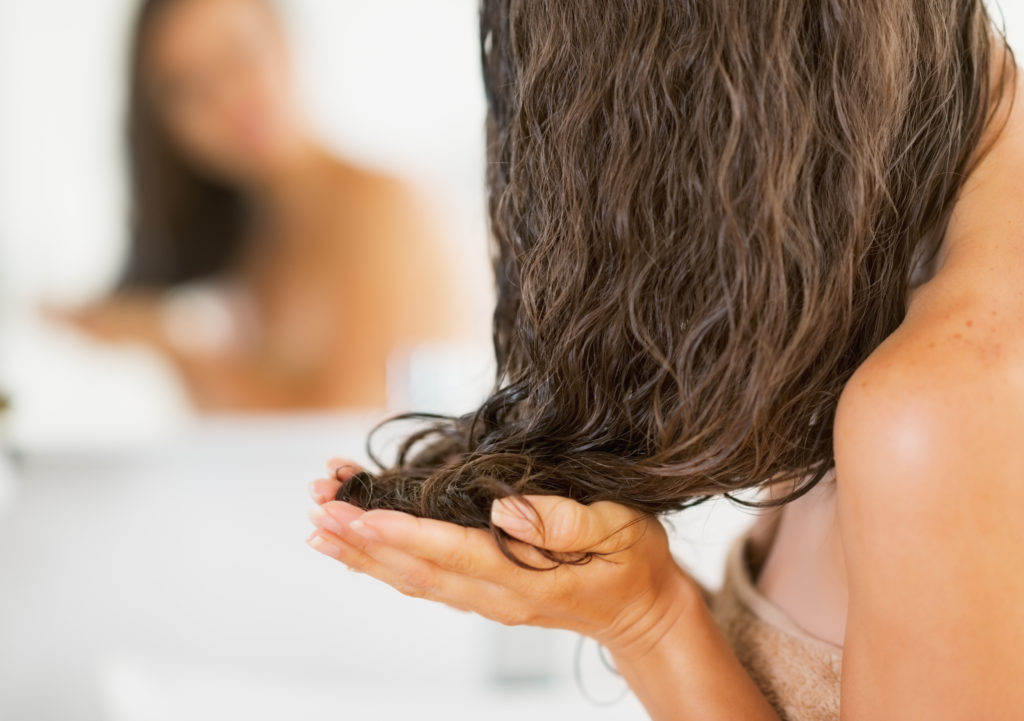
Just like your body, your hair craves hydration to stay vibrant and healthy. Drinking an ample amount of water daily not only benefits your overall well-being but also contributes to luscious, well-moisturized hair. However, hydration doesn’t stop at water intake alone.
Preserving Healthy Hair Cuticles #2. Limit Heat Styling:
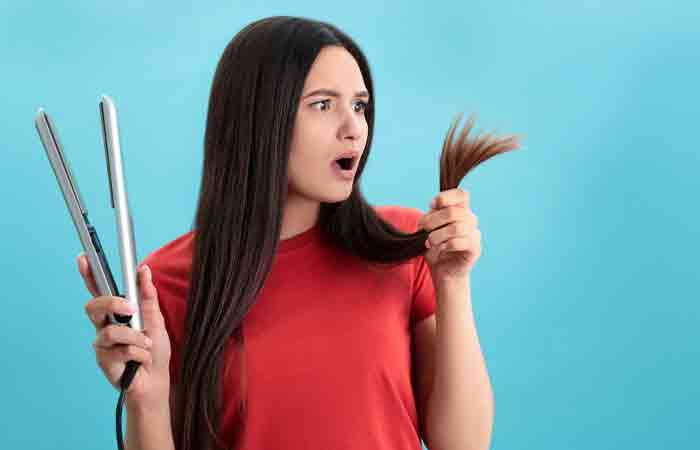
We all love a good hair transformation, but extreme heat styling can be detrimental to your hair cuticles. Embrace your natural hair texture and give your locks a break from constant heat exposure. When you do reach for your favorite styling tools, make sure to apply a heat-protectant product first.
3. Gentle Towel Drying for Happy Cuticles:

After a refreshing hair wash, it’s tempting to vigorously towel-dry your hair. However, this can lead to friction and damage to your delicate cuticles. Instead, opt for a gentler approach. A soft microfibre towel or an old cotton t-shirt works well for patting dry hair. These materials are kinder to your cuticles, reducing stress to your cuticles.
Preserving Healthy Hair Cuticles #4. Trim Away the Troubles:
Split ends are not only unsightly but can also be a serious threat to your hair cuticles. Once they appear, split ends can travel up the hair shaft, causing more damage to your precious cuticles and overall hair health. Maintaining a regular schedule of haircuts is an important element of avoiding this problem.
Preserving Healthy Hair Cuticles #5. Sun Shield for Your Strands:
While enjoying sunny days, we often remember to protect our skin from harmful UV rays. But what about our hair? The sun’s rays can be equally damaging to your hair cuticles. To shield your strands from the sun’s harmful effects, consider wearing a stylish hat or using hair products with built-in UV protection. These protective measures will not only preserve your cuticles but also maintain your hair’s color and shine.
V. Conclusion
In conclusion, understanding and caring for your hair cuticles is essential for maintaining healthy and beautiful locks. These microscopic layers play a crucial role in protecting your hair from damage and locking in moisture. By adopting a few simple practices, such as using the right hair care products, minimizing heat styling, and incorporating protective measures, you can ensure the health and integrity of your hair cuticles.


 BEST SELLING PRODUCTS
BEST SELLING PRODUCTS Wig Hair
Wig Hair WHOLESALE
WHOLESALE Contact us
Contact us Sale Events
Sale Events